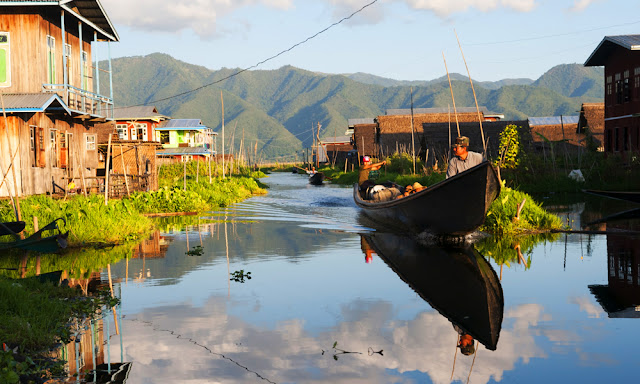President: Lt. Gen. Thein Sein (2011)
Vice President: Vice President Sai Mouk Kham (2011)
Land area: 253,954 sq mi (657,741 sq km); total area: 261,969 q mi (678,500 sq km)
Population (2014 est.): 55,746,253 (growth rate: 1.03%); birth rate: 19.11/1000; infant mortality rate: 47.74/1000; life expectancy: 65.24; density per sq km: 72
Capital and largest city (2011 est.):Rangoon, 4.457 million
Other large cities: Mandalay, 1.063 million; Nay Pyi Taw 1.06 million
Monetary unit: Kyat
Slightly smaller than Texas, Myanmar occupies the Thailand/Cambodia portion of the Indochinese peninsula. India lies to the northwest and China to the northeast. Bangladesh, Laos, and Thailand are also neighbors. The Bay of Bengal touches the southwest coast. The fertile delta of the Irrawaddy River in the south contains a network of interconnecting canals and nine principal river mouths.
The ethnic origins of modern Myanmar (known historically as Burma) are a mixture of Indo-Aryans, who began pushing into the area around 700 B.C. , and the Mongolian invaders under Kublai Khan who penetrated the region in the 13th century. Anawrahta (1044–1077) was the first great unifier of Myanmar.
In 1612, the British East India Company sent agents to Burma, but the Burmese doggedly resisted efforts of British, Dutch, and Portuguese traders to establish posts along the Bay of Bengal. Through the Anglo-Burmese War in 1824–1826 and two subsequent wars, the British East India Company expanded to the whole of Burma. By 1886, Burma was annexed to India, then became a separate colony in 1937.
Vice President: Vice President Sai Mouk Kham (2011)
Land area: 253,954 sq mi (657,741 sq km); total area: 261,969 q mi (678,500 sq km)
Population (2014 est.): 55,746,253 (growth rate: 1.03%); birth rate: 19.11/1000; infant mortality rate: 47.74/1000; life expectancy: 65.24; density per sq km: 72
Capital and largest city (2011 est.):Rangoon, 4.457 million
Other large cities: Mandalay, 1.063 million; Nay Pyi Taw 1.06 million
Monetary unit: Kyat
Slightly smaller than Texas, Myanmar occupies the Thailand/Cambodia portion of the Indochinese peninsula. India lies to the northwest and China to the northeast. Bangladesh, Laos, and Thailand are also neighbors. The Bay of Bengal touches the southwest coast. The fertile delta of the Irrawaddy River in the south contains a network of interconnecting canals and nine principal river mouths.
The ethnic origins of modern Myanmar (known historically as Burma) are a mixture of Indo-Aryans, who began pushing into the area around 700 B.C. , and the Mongolian invaders under Kublai Khan who penetrated the region in the 13th century. Anawrahta (1044–1077) was the first great unifier of Myanmar.
In 1612, the British East India Company sent agents to Burma, but the Burmese doggedly resisted efforts of British, Dutch, and Portuguese traders to establish posts along the Bay of Bengal. Through the Anglo-Burmese War in 1824–1826 and two subsequent wars, the British East India Company expanded to the whole of Burma. By 1886, Burma was annexed to India, then became a separate colony in 1937.
Tags: Burma (Myanmar),Burma,Burma Country,Burma Muslims,Burma (Myanmar) Country,Burma (Myanmar) whole country cities,Burma (Myanmar) cities,









.jpg)













